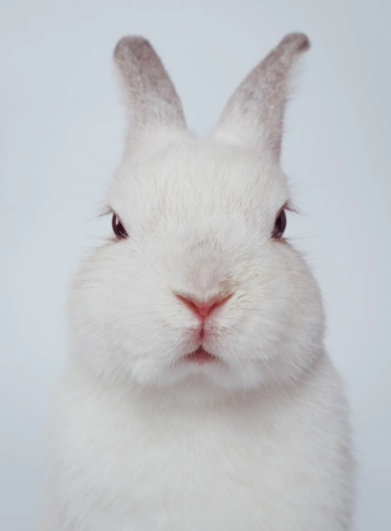🐾 Cat and Dog ID Photo Generator
Create professional pet identification photos, official pet passport photos, and stunning pet headshots for your beloved cats and dogs
✨ Professional Pet Identification Photo Samples



Complete Guide to Pet Identification Photos
Why Pet Identification Photos Matter
Pet identification photos serve crucial purposes in modern pet ownership. These professional photographs are essential for various official documents, travel requirements, and emergency situations. Whether you're planning international travel with your pet, registering for pet insurance, or creating identification documents for local authorities, having high-quality pet identification photos is indispensable.
Professional Standards for Pet ID Photos
Creating effective pet identification photos requires attention to specific standards and guidelines. Professional pet ID photos should feature clear visibility of your pet's face, appropriate lighting conditions, and a neutral background that doesn't distract from your pet's features. The photo should capture your pet in a calm, natural state where their distinguishing characteristics are clearly visible.
When You Need Pet Identification Photos
- International Travel: Many countries require official pet passport photos for quarantine and customs documentation
- Veterinary Records: Professional identification photos help maintain accurate medical records
- Pet Insurance Claims: Insurance companies often require recent identification photos for policy verification
- Microchip Registration: Visual identification complements microchip data in pet recovery systems
- Breeding Documentation: Pedigree registration requires high-quality identification photographs
- Lost Pet Recovery: Clear identification photos are essential for missing pet alerts and recovery efforts
Technical Requirements and Specifications
Understanding the technical aspects of pet identification photography ensures your photos meet professional standards. The ideal pet ID photo should have high resolution (minimum 300 DPI), proper color balance, and sufficient contrast to clearly distinguish your pet's features. Lighting should be even and natural, avoiding harsh shadows or overexposure that might obscure important details.
Different Types of Pet Identification Photos
Various situations require different styles of pet identification photos. Passport-style photos focus on head and shoulders with a neutral background, while full-body identification photos show your pet's complete profile and physical characteristics. Emergency identification photos should emphasize unique markings, scars, or distinctive features that help identify your pet in stressful situations.
Pet ID Photo Requirements and Standards
Photo Quality Standards
High-quality pet identification photos must meet specific technical criteria to ensure they serve their intended purpose effectively. The image resolution should be at least 300 DPI for print quality, with dimensions typically ranging from 2x2 inches to 4x6 inches depending on the intended use. Color accuracy is crucial, as veterinarians and officials rely on these photos to identify specific coat colors and patterns.
Background and Lighting Requirements
Professional pet identification photos require neutral backgrounds that don't compete with your pet's appearance. Light blue, white, or gray backgrounds work best for official documentation. Lighting should be soft and even, eliminating harsh shadows while ensuring all facial features are clearly visible. Natural lighting often produces the best results, though professional studio lighting can also achieve excellent outcomes.
Positioning and Composition Guidelines
- Head Position: Your pet's head should be upright and facing forward, showing both eyes clearly
- Eye Contact: Eyes should be open and looking toward the camera for maximum identification value
- Ear Visibility: Both ears should be visible and in their natural position
- Facial Expression: Calm, relaxed expression works best for official documentation
- Body Positioning: Shoulders should be square to the camera in headshot-style photos
Common Mistakes to Avoid
Several common errors can render pet identification photos unusable for official purposes. Blurry images caused by camera shake or pet movement are the most frequent problem. Inappropriate backgrounds with busy patterns or bright colors can distract from your pet's features. Poor lighting that creates dark shadows or washes out colors makes identification difficult.
File Format and Storage Recommendations
Save your pet identification photos in high-quality formats such as JPEG or PNG. Maintain original, uncompressed versions for archival purposes while creating smaller versions for online applications. Consider storing multiple copies in different locations, including cloud storage, to ensure you always have access to current identification photos when needed.
Frequently Asked Questions
How often should I update my pet's identification photos?
Pet identification photos should be updated at least annually, or whenever your pet's appearance changes significantly. Young animals grow and change quickly, requiring more frequent updates. Senior pets may develop gray fur or other age-related changes that warrant new identification photos. Always update photos after grooming that significantly alters your pet's appearance.
What file formats are accepted for official pet documents?
Most official agencies accept JPEG and PNG formats for pet identification photos. JPEG is preferred for its smaller file size and wide compatibility, while PNG offers better quality for detailed images. Some international agencies may have specific format requirements, so always check the documentation requirements for your specific situation.
Can I use smartphone photos for pet identification?
Modern smartphones can produce acceptable pet identification photos if used correctly. Ensure adequate lighting, use the highest quality camera settings, and maintain steady hands to avoid blur. However, professional photography equipment often produces superior results for important official documents, especially for international travel or breeding registration.
How do I get my pet to cooperate during photo sessions?
Successful pet photography requires patience and preparation. Schedule photo sessions when your pet is calm and relaxed, typically after exercise or feeding. Use treats and positive reinforcement to encourage cooperation. Take multiple shots to ensure you capture the perfect image, and consider having an assistant help position your pet while you operate the camera.
Are there specific requirements for different pet species?
While cats and dogs have similar identification photo requirements, some nuances exist. Cats may require more patience due to their independent nature, while dogs often respond better to commands during photo sessions. Exotic pets may have specific documentation requirements that vary by species and jurisdiction. Always research the specific requirements for your pet's species and intended use.
What should I do if my pet has identifying marks or scars?
Distinctive markings, scars, or other unique features should be clearly visible in identification photos. These characteristics are invaluable for positive identification in emergency situations. Consider taking additional close-up photos of significant markings to supplement your standard identification photos. Document the location and appearance of these features in writing as well.
About Our Pet Identification Photo Service
Our Mission
We are dedicated to helping pet owners create professional-quality identification photos that meet official standards while celebrating the unique personality of each beloved companion. Our advanced AI technology combines professional photography principles with user-friendly tools to deliver exceptional results without the need for expensive equipment or photography expertise.
Technology and Innovation
Our pet identification photo generator utilizes cutting-edge artificial intelligence trained specifically on pet photography standards. The system automatically adjusts lighting, enhances image quality, and ensures proper composition while maintaining the natural appearance of your pet. This technology democratizes access to professional-quality pet photography, making it available to all pet owners regardless of their technical skills or budget.
Quality Assurance
Every generated pet identification photo undergoes automated quality checks to ensure it meets professional standards. Our system verifies image resolution, color accuracy, composition, and clarity before delivering the final result. This quality assurance process guarantees that your pet identification photos will be suitable for their intended official use.
Privacy and Security
We understand that pet photos are precious memories and important documents. Our platform implements robust security measures to protect your uploaded images and personal information. Photos are processed securely and are not stored permanently on our servers. We never share or use your pet photos for any purpose other than generating your requested identification photos.
Support and Assistance
Our team of pet photography experts and technical specialists is available to assist with any questions or concerns about the photo generation process. We provide comprehensive guides, tutorials, and customer support to ensure you achieve the best possible results for your pet identification photos.
Professional Pet Identification Photo Services
© 2024 Pet ID Photo Generator. All rights reserved.